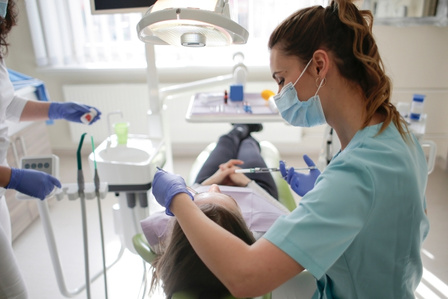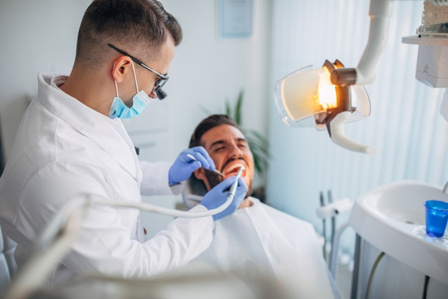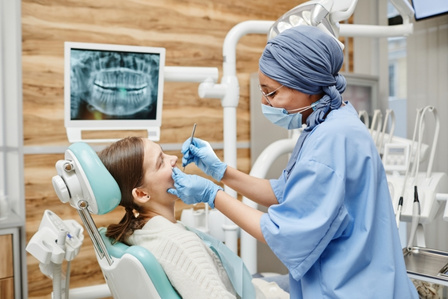
Yellow teeth may make individuals self-conscious about their smile. With time, stains form due to daily habits such as drinking tea, coffee, or wine, smoking, and poor dental hygiene. Though most resort to home remedies and teeth-whitening kits, professional dental cleaning is highly recommended.
But does a teeth cleaning really eliminate yellow stains? This blog delves into how professional cleanings function, what type of stains they can eliminate, and how to keep your smile brighter after your visit.
What Causes Yellow Stains on Teeth?
Do you know why your teeth might get yellow with time?
- Plaque and tartar accumulation – Soft plaque becomes tartar through time and yellows teeth.
- Food and beverages – Dark beverages such as coffee, tea, red wine, and acidic foods discolor the enamel.
- Tobacco and smoking – Cigarettes produce irritating tar and nicotine, leading to difficult yellow and brown stains.
- Poor oral hygiene – Infrequent brushing and flossing allow plaque to accumulate, dulling the natural tooth color.
- Aging and enamel wear – As enamel grows thinner with age; the underlying yellow dentin appears more clearly.
How Professional Teeth Cleaning Works?
A professional dental cleaning in Moundridge, KS, does more than eliminate plaque—it enhances oral health and the natural whiteness of teeth. Here’s what occurs during the process:
- Scaling – A hygienist or dentist employs special tools to eliminate plaque and hardened tartar from the gumline and teeth. This process is important in removing yellow buildup that regular brushing cannot eliminate.
- Polishing – Following scaling, a mildly abrasive paste is used in a polishing tool to smooth the enamel and remove surface stains by buffing. This restores the natural luster.
- Fluoride treatment (optional) – Fluoride is applied to some cleanings, which reinforces enamel and lessens the risk of future staining.
Can a Teeth Cleaning Remove Yellow Stains?
Teeth cleaning is very effective for enhancing the look of teeth, but its effectiveness against stains is variable based on the type of stains.
When does a dental cleaning help?
- Eliminates surface stains – Cleaning removes yellowing due to plaque, tartar, and small food stains.
- Restores natural brightness – Polishing smoothes out rough enamel, making teeth appear shinier and healthier.
When a dental cleaning does not help?
- Fails to erase deep stains – Stains present in the dentin or enamel (because of aging or drug use) need whitening.
- Does not whiten teeth beyond their natural color – Cleaning returns teeth to their original color but does not bleach them.
How to Prevent Yellow Stains After a Cleaning?
To extend the effects of professional cleaning and keep your teeth appearing newly clean, use these preventive measures:
- Brush regularly – Use toothpaste containing fluoride and a brush with soft bristles to discourage plaque formation.
- Floss each day – Pulls out the plaque and food debris between the teeth, where staining tends to occur.
- Employ a whitening toothpaste – Minimizes minor stains and keeps teeth appearing bright in the long term.
- Rinse with food or liquids – Swishing mouthwash after drinking coffee, tea, or wine can reduce staining.
- Stop using tobacco products – Prevents discoloration from nicotine and enhances the overall health of the mouth.
- Schedule dental cleanings regularly – Professional cleanings every six months keep stains and tartar in check.
A professional teeth cleaning is a great method to eliminate yellow spots resulting from plaque, tartar, and surface discoloration due to food and beverages. Although it won’t whiten teeth more than their natural color or eliminate embedded stains, it makes them much healthier and better-looking.
To maintain your bright smile, practice good oral hygiene, avoid foods that cause stains, and have your dentist in Moundridge clean your teeth regularly. Regularity is the key to having a whiter, healthier smile.


